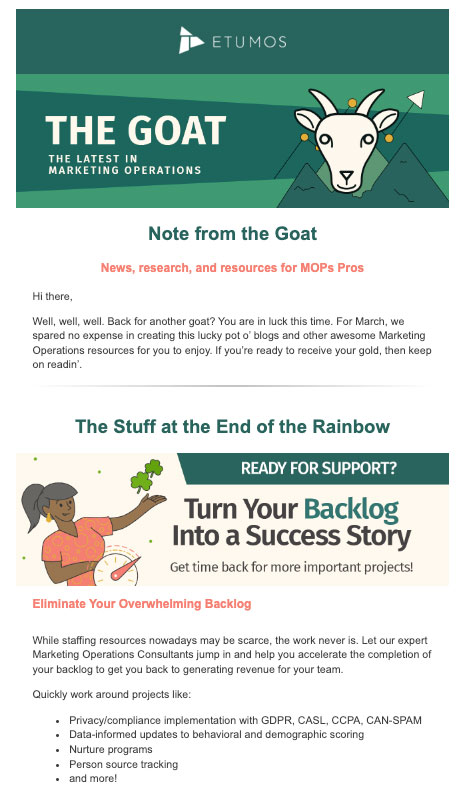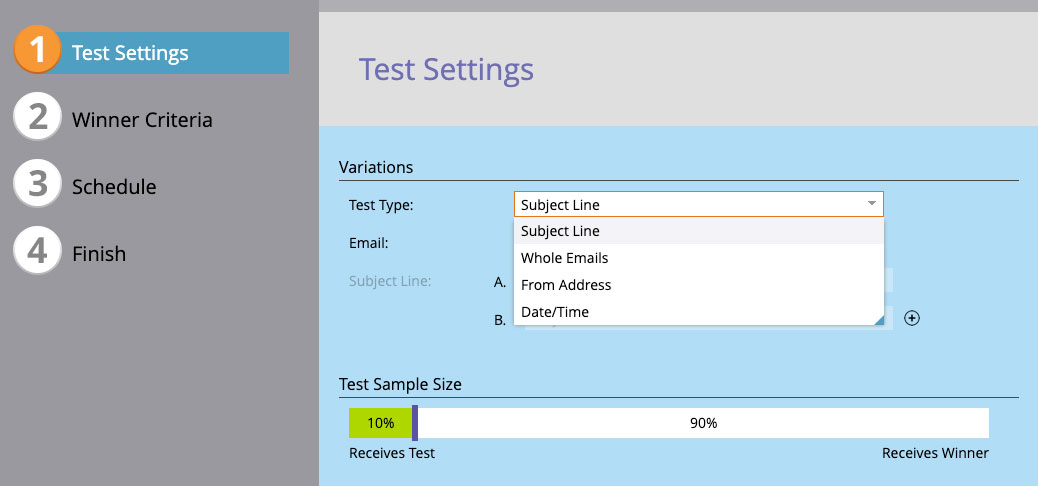Overview
What is Campaign Relevancy? Why should companies seek to improve Campaign Relevancy? When should companies focus on addressing it? How should a company improve Campaign Relevancy with Marketo Engage?
What is campaign relevancy?
Campaign relevancy refers to how closely campaigns resonate with an audience when building campaigns out of marketing automation platforms. It goes hand in hand with the core reasons why a company would take the time to implement a campaign.
Why should companies improve campaign relevancy?
Companies should improve campaign relevancy to ensure efficient campaign efforts and successful campaigns. Improving campaign relevancy has a direct impact on the effectiveness of campaigns because the right message reaches the right audience at the right time.
In the long run, campaign relevancy has a positive impact on a company’s bottom line because the time that is spent on campaigns ultimately results in profitability. If people are positively engaging with a company’s campaigns, they are more likely to go to that company when they want/need their products or services because that company has made itself relevant.
Team members that play any role in a company’s campaigns can also experience a morale boost when their efforts are put towards improving campaign relevancy. This is because they will no longer spend as much time spinning their wheels hoping that anything they put out there will result in positive audience engagement.
How should a company improve campaign relevancy?
Campaign relevancy starts with a scalable campaign production framework as well as aligning campaign objectives and corresponding goals with a plan for campaign execution. Ensuring that objectives and goals are in line with campaigns that bring value to target audiences will set campaigns up for success, be more relevant to audiences and meet KPIs.
 To set the stage for campaign relevancy, ensuring a professional and consistent brand appearance is fundamental. Branding can be baked into program templates within a company’s Marketo Engage instance. This ensures that emails and landing pages have uniformity and look good on all types of devices.
To set the stage for campaign relevancy, ensuring a professional and consistent brand appearance is fundamental. Branding can be baked into program templates within a company’s Marketo Engage instance. This ensures that emails and landing pages have uniformity and look good on all types of devices.
With the right templates in place, a company can start improving campaign relevancy by introducing personalization. This can be done through the use of tokens to incorporate a person’s name, company name, purchase history details, content interaction, etc. into campaigns. Audiences interpret personalization as a company really understanding them, their wants, and/or needs.
Following subject line best practices are a way to start implementing improvements to campaign relevancy as soon as possible. Companies should think about subject lines as the first impression an email recipient has of the email they have received. A subject line will be one of the factors taken into consideration when a recipient takes seconds to decide if the email is worth their time and attention. Following subject line best practices ensures that the first opportunity to engage with an email recipient is not a wasted opportunity.
A company can also use triggered campaigns to their advantage to improve campaign relevancy through automated processing. Triggered campaigns fire based on actions set in the campaign’s smart list. Using trigger campaigns improves campaign relevancy because the campaign’s flow steps will take place at the most relevant time in association to the action(s) taken. Having a clear understanding of the buyer’s journey can help determine which actions to set and what flow steps will follow.
A/B testing is a Marketo Engage feature that tests performance of certain elements of an email. This feature can help bring clarity to which elements will result in higher engagement with an email to determine which version of an email should be sent to a larger audience. This is done by sending variations of an email to different smaller sample audiences and determines the winner in email performance.

The use of engagement programs to automate lead nurturing is yet another way to improve campaign relevancy. If used correctly, engagement programs help companies get ahead of the needs of certain audiences while they are at the different stages of the marketing funnel to encourage moving people to the next stage. The right message that coincides with someone’s place in the marketing funnel, is as relevant as it gets.
A company can take campaign relevancy even further by using segmentations to break up their database by characteristics, interests, behaviors, preferences, etc. to accomplish optimal audience targeting. If a database is segmented, tailored campaigns can be created for each segment to accomplish campaigns resonating closely with those audiences.
Dynamic content will take campaign relevancy efforts to a whole other level of efficiency. With dynamic content, parts of an email or landing page can appear differently, by using dynamic content blocks, depending on the segmentation. If you have components of email or landing page assets that can be used over and over again across different assets, snippets should be leveraged to maximize efficiency in production of those assets and used in dynamic content blocks.
Who should implement improvements to campaign relevancy?
Team members that play any role in a company’s campaigns initiatives should reframe how they think about strategies for campaign execution to achieve consensus on which approaches will be considered best practice to ensure campaign relevancy. Depending on which approaches a company will adopt, to achieve maximum campaign relevancy, will determine exactly who should implement certain improvements. This may be one person or several people within a company.
Conclusion
Companies with campaign strategies that do not take into account campaign relevancy can miss the mark and become inefficient with campaign efforts. It is wise for companies to reach consensus on what campaign relevancy practices work best for them, who will enforce and who will implement such practices to ensure they are doing everything they can to make campaigns relevant to their audiences and have individuals make their way through the marketing funnel as they become more engaged.







